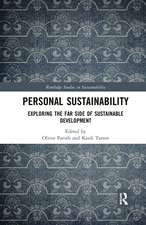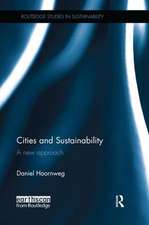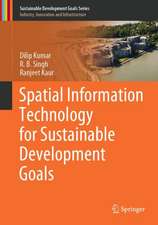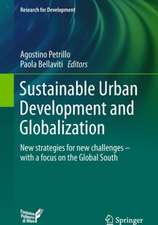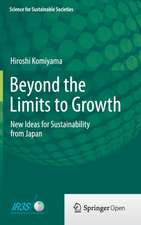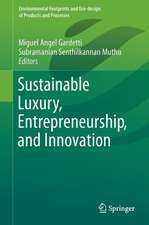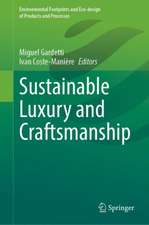Application of the Water Footprint: Water Stress Analysis and Allocation
Autor Meng Xu, Chunhui Lien Limba Engleză Paperback – 26 noi 2020
Highlighting the utilization of WF accounting in sustainable water management, one of the book’s goals is to establish the optimization model of water allocation in various industrial sectors. Based on WF accounting, which thoroughly considers the water input for production, the relevant intermediate water inputs, and the water amount for wastewater discharge dilutions, the book provides a wealth of insights for scholars and practitioners with an interest in water resources and environmental management. In addition, it exhibits a scientific plan for regional water resource utilization and allocation, helping relieve regional water shortages.
| Toate formatele și edițiile | Preț | Express |
|---|---|---|
| Paperback (1) | 462.87 lei 39-44 zile | |
| Springer Nature Singapore – 26 noi 2020 | 462.87 lei 39-44 zile | |
| Hardback (1) | 550.21 lei 39-44 zile | |
| Springer Nature Singapore – 26 noi 2019 | 550.21 lei 39-44 zile |
Preț: 462.87 lei
Preț vechi: 571.45 lei
-19% Nou
Puncte Express: 694
Preț estimativ în valută:
88.57€ • 92.29$ • 73.34£
88.57€ • 92.29$ • 73.34£
Carte tipărită la comandă
Livrare economică 31 martie-05 aprilie
Preluare comenzi: 021 569.72.76
Specificații
ISBN-13: 9789811502361
ISBN-10: 9811502366
Pagini: 149
Ilustrații: XVI, 149 p. 48 illus., 46 illus. in color.
Dimensiuni: 155 x 235 mm
Ediția:1st ed. 2020
Editura: Springer Nature Singapore
Colecția Springer
Locul publicării:Singapore, Singapore
ISBN-10: 9811502366
Pagini: 149
Ilustrații: XVI, 149 p. 48 illus., 46 illus. in color.
Dimensiuni: 155 x 235 mm
Ediția:1st ed. 2020
Editura: Springer Nature Singapore
Colecția Springer
Locul publicării:Singapore, Singapore
Cuprins
Introduction.- PART I: Virtual Water and Water Footprint Accounting.- The Concepts of Virtual Water and Water Footprint.- Water Footprint Accounting Method.- PART II: Evaluation of Water Stresses Based on WFs.- Studies on the Evaluation of Water Footprints at Various Regional Scales.- Principal Water Stress Analysis Indexes and Approaches Based on WFs.- PART III: Study Cases: Water Stress Evaluation Under Multiple Regional Scales.- Study Cases: Water Stresses Evaluation at the Provincial Scale —the Zhejiang Province Case Study.- Study Case: Evaluation of Water Stresses at the River Basin Scale — the Haihe River Basin Case Study.- Case Study: Evaluation of Water Stresses at the City Scale —Dalian.- Comparisons of the Major Indexes on Water Stresses Analysis under Multiple Regional Scales.- PART IV: Water Footprint Accounting Application in Water Management Strategies.- Influencing Factors Analysis of Water Footprint Based on Extended STIRPAT Model.- Optimal Water Utilization and Allocation Strategy based on Water Footprint Accounting.- Conclusions.
Notă biografică
Meng Xu is an Associate Professor at the School of Public Administration, Zhejiang University of Finance & Economics. She received her Ph.D. in Environmental Science from Beijing Normal University in 2018. Her research interest mainly concentrates on water resources management and allocation.
Chunhui Li is currently a Professor at Beijing Normal University, where he previously served as Director of the Ministry of Education Key Lab of Water and Sand Science for 10 years. His research activities are mainly devoted to water resources and water environment. He is engaged in numerous research associations and societies for environmental and dam research, and has published more than 100 journal papers and 10 academic books.
Chunhui Li is currently a Professor at Beijing Normal University, where he previously served as Director of the Ministry of Education Key Lab of Water and Sand Science for 10 years. His research activities are mainly devoted to water resources and water environment. He is engaged in numerous research associations and societies for environmental and dam research, and has published more than 100 journal papers and 10 academic books.
Textul de pe ultima copertă
Based on the water footprint (WF) concept, this book reviews WF-based water stress evaluation methods at the city, provincial and river basin levels respectively. In addition, it explores the factors that influence regional water footprint in the spatial sequence via the extended STIRPAT model.
Highlighting the utilization of WF accounting in sustainable water management, one of the book’s goals is to establish the optimization model of water allocation in various industrial sectors. Based on WF accounting, which thoroughly considers the water input for production, the relevant intermediate water inputs, and the water amount for wastewater discharge dilutions, the book provides a wealth of insights for scholars and practitioners with an interest in water resources and environmental management. In addition, it exhibits a scientific plan for regional water resource utilization and allocation, helping relieve regional water shortages.
Highlighting the utilization of WF accounting in sustainable water management, one of the book’s goals is to establish the optimization model of water allocation in various industrial sectors. Based on WF accounting, which thoroughly considers the water input for production, the relevant intermediate water inputs, and the water amount for wastewater discharge dilutions, the book provides a wealth of insights for scholars and practitioners with an interest in water resources and environmental management. In addition, it exhibits a scientific plan for regional water resource utilization and allocation, helping relieve regional water shortages.
Caracteristici
Provides WF-based water stress evaluation methods for various regional scales Explores the factors that influence regional water footprint in the spatial sequence based on the extended STIRPAT model Helps to establish the optimization water allocation model in various industrial sectors that employs water footprint accounting

